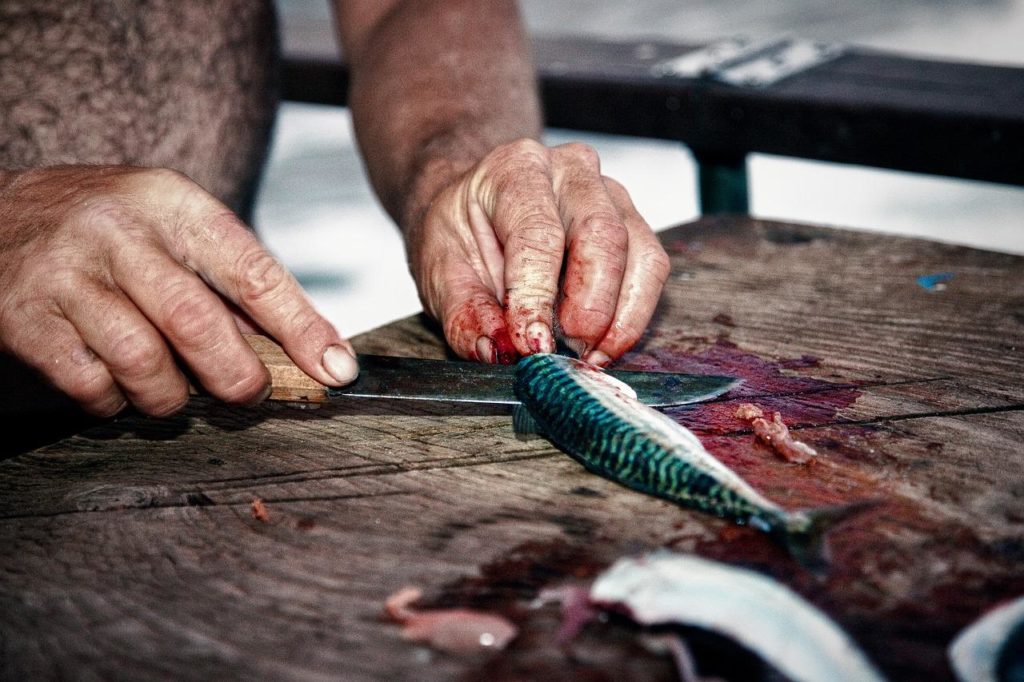The global market for this type of goods will increase at a CAGR of roughly 5.9% over the next five years, will reach 380 million US$ in 2023, from 270 million US$ in 2017, according to a new study.
When it’s time to cook, maybe the most important tool in your arsenal is a knife. They’re used for everything from cutting, chopping, slicing to dicing, mincing, julienne. Having a set of sharp knives at home can take your cooking game up a notch and make meal prep so much easier.
Having high-quality set will also keep them in good condition over time. For example: if you use cheap plastic handles on your expensive blade it could break off when washing or scraping something off against the side of the sink (or even worse). This could cause serious injury because now there’s no handle left behind as protection between fingers and that sharp edge!

What are fish fillet knives?
This type is specialized, which is unadjusted for other functions, unlike pocketknives and bowie knife, it is intended only for filleting fish. They typically are made in different shapes and sizes. Some have a serrated edge, to separate tough cartilage or skin, without tearing the flesh beneath.
Fish fillets are found in many parts of the world. This ingredient is often an important part of local cuisine, salmon from Alaska or eel from Japan.
Also in the form of a fillet can be cooked:
- codfish;
- trout;
- mullet;
- snapper;
- flounder;
- sole;
- swordfish.
It is very important to properly care for the fillet knife, as this will extend the service life.
A few words about types
I distinguish two, the most common types are the flexible blade and the electric fillet knife. The first is similar to the chef’s knife. It allows you to use the knife so that when holding the fish with your hand, your fingers are one hundred percent safe. The key to this is the correct and high-quality sharpening of the blade. In the future, this will allow you to easily cut skin, scales and bones without putting much pressure and strain on your hand, which means you will not get tired.
The second uses electricity instead of muscles in order to help slice through tough materials quickly and efficiently. It’s important besides that these blades can cut easily through any structures within their path but also ensure they don’t slip off course too often—this can lead up costing time wasted time trying again…and again until finally getting it right!
An electric has three parts:
- the blade;
- the motor and power source;
- a handle or stand that keeps everything together.
When you turn it on, an electrical current runs from the motor through wires embedded in the blade all the way up through its handle until it hits your hand—and voila! You’ve just turned yourself into one seriously sharp kitchen tool.
But how does this miracle happen? Well, there’s no magic involved here—just science! The blade is made out of super-hardened steel (which means that even if you drop your knife while using it underwater or against another metal object like stainless steel pans), you won’t chip off any corners along its edge or ruin any other part of its structure when doing so because these materials are built specifically for these tasks without any flaws whatsoever so there’s nothing stopping them from keeping their shape throughout various processes (such as cutting).

What size fish fillet knife is best?
It is depends on:
- how big is your booty;
- What are your hand sizes?
The dimensions can be from 4 – 9 inch (10 cm to 23 cm). On average, they are 6 inches (15 cm) long, which allows it to be held with one hand by almost everyone during use. The length depends on how you use it. For larger fish, use the longer 7 inches (18 cm). For delicate tasks, such as removing skin or scales from small specimens and trimming fins without disturbing their appearance, choose short.
To prevent injury and slippage during use, the handle is often textured for extra grip. Most often, wood, plastic or rubber are chosen for the manufacture of the grip. They try to make it ergonomically shaped for convenience. The color of the handle should be different so as not to confuse it with the blade in a hurry.
What is the best fish fillet knife?
There are many factors involved in determining which knife will be best for you, but ultimately it’s up to your personal preference.
Every person has a different way of cutting, so what might work for some people may not work for others. It really depends on how you cut and how much control you want over your cuts. Some people may prefer using a shorter blade for their cuts, but others may opt for a longer blade because it gives them more leverage and makes it easier to cut through thicker pieces of fish without needing two hands or having to find somewhere else to hold the fish since they don’t have enough room with just one hand available while they’re holding onto their knife with another hand.
What is the best electric fillet knife for fish?
We’ve tested some of the most popular models on Amazon and found them to work great, especially if you don’t have time to clean or maintain.
The top model of the knife will be comfortable, simple and comes with a bunch of replacement blades. Some models even offer a cleaning station, so your blade stays sharp longer (although most users say they don’t notice any difference).
If you’re interested in learning more about these products and whether they’re right for your needs, keep reading!
The knife is by far the most important tool in cooking, which is why you should invest properly. The quality of your fish will determine how well you should clean it before cooking it or serving it on a plate with sauce or spices added to enhance its flavor. If your fish has scales and fins then these need to be removed carefully so that they don’t burn off during cooking time!
You should invest in quality knives that will last a lifetime. You should always keep your knives sharp, and you should always clean them after use. After you’ve finished with them, dry them thoroughly after washing and store them properly so that they don’t rust or dull over time.
If you take proper care of your knives, they’ll stay sharp for years to come.
Conclusion
Choosing the right tool depends on how much you can surprise and enjoy fresh fish. They allow you to easily cut meat and remove bones, so you can always cook the perfect filet. It was hard to pick just one, but we think Berkley’s got the best fillet knife with their new model. It’s made from high-quality materials, has a really sharp edge, and is perfect for cutting up fish at home or out on your boat. If you want something cheaper that still works well try Rapala’s one-piece model as an alternative option!


0 Comments